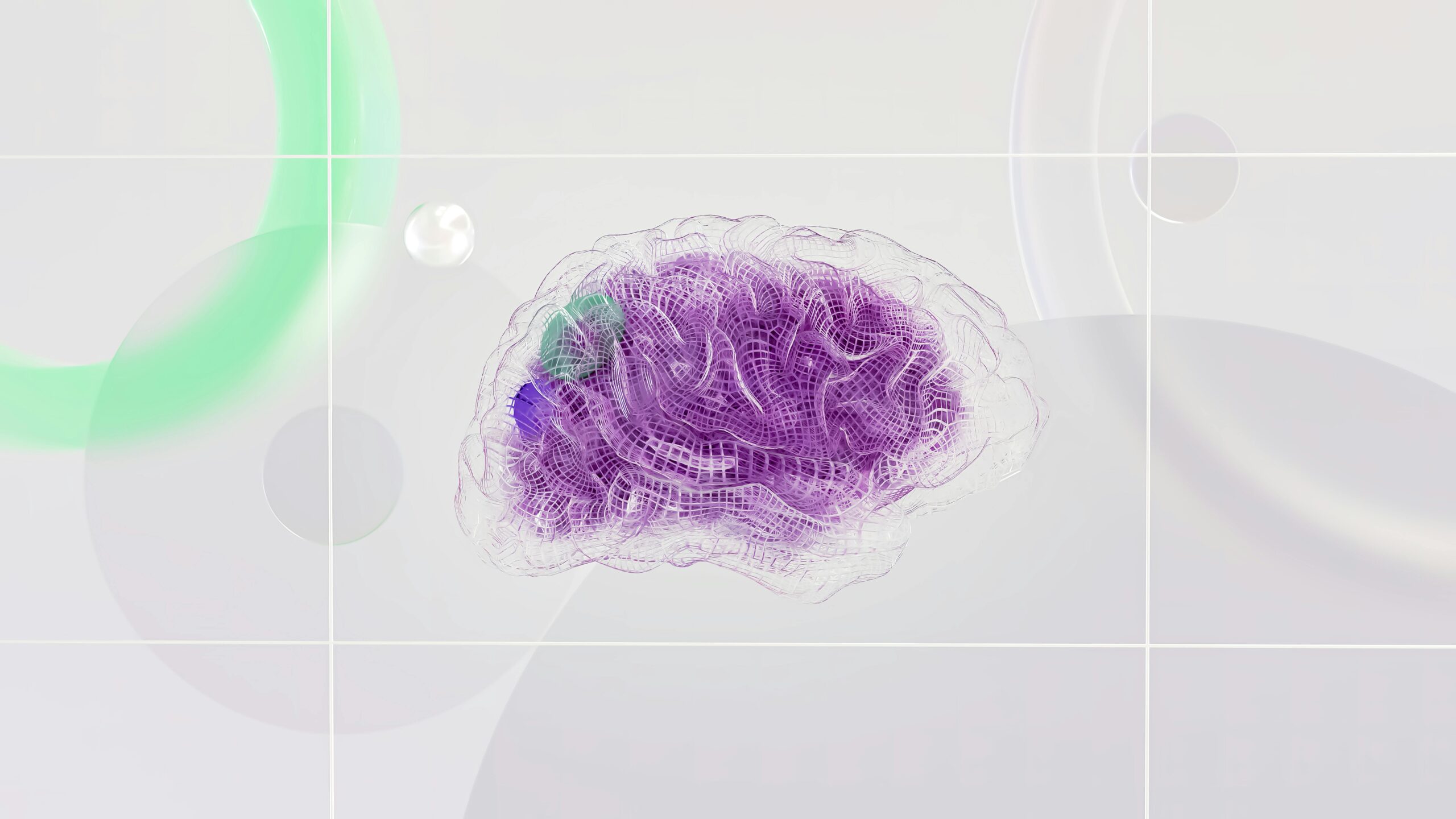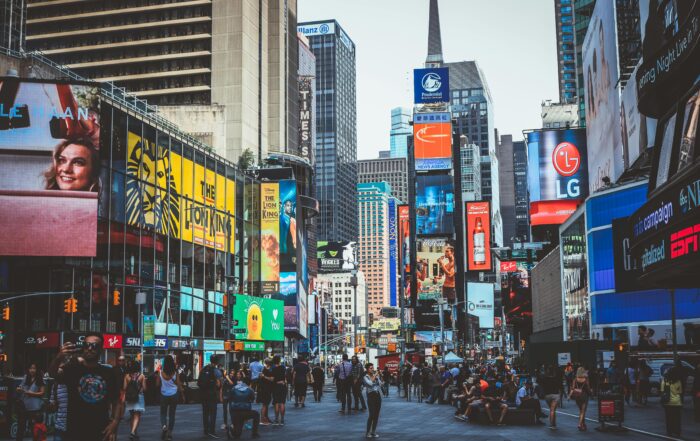Artificial Intelligence (AI) has transformed numerous industries, and its impact on advertising is especially profound. What once relied on manual processes and educated guesses is now being revolutionized by machine learning, data analysis, and automation. AI allows advertisers to create highly personalized, efficient, and scalable campaigns that target individuals with precision, predict consumer behavior, and automate ad delivery. As AI technologies evolve, so does their influence on advertising strategies, setting the stage for smarter, data-driven marketing that delivers meaningful results.
In this blog, we’ll dive deep into how AI is revolutionizing advertising, examining its role in data-driven personalization, creative content generation, ad campaign optimization, and predictive analytics.

Table of Contents
6. Hyper-Personalization through AI-Driven Data Analysis
One of the most significant changes AI has brought to advertising is the ability to harness vast amounts of data. AI systems can track and analyze user behaviors across multiple platforms, such as websites, social media, and search engines, to gain insights into individual preferences and habits. This data is crucial in creating personalized campaigns.
Unlike traditional advertising, which often casts a wide net, AI enables hyper-personalization by delivering ads tailored to individual users’ interests, behaviors, and online interactions. For instance, an AI algorithm might analyze a consumer’s past purchases, search history, and social media engagement to determine their preferences. As a result, instead of being shown generic ads, users are more likely to see relevant products or services, significantly increasing engagement and conversion rates.
Real-World Example: Netflix and Amazon are pioneers of AI-powered recommendations. These platforms use machine learning algorithms to analyze viewer preferences, delivering personalized recommendations for shows or products. In advertising, a similar AI approach can be applied to predict what consumers want and deliver targeted ads accordingly.
The success of hyper-personalization through AI is also evident in social media advertising, where platforms like Facebook and Instagram leverage machine learning to segment audiences. AI-powered ad platforms can identify micro-segments within target demographics, ensuring that each individual is shown ads most relevant to them.
5. Automated Ad Creation and Optimization
AI isn’t just improving the targeting process; it’s also revolutionizing ad creation itself. AI-powered tools like Jasper and ChatGPT can generate ad copy, design, and even visuals based on a set of parameters. This automation reduces the manual effort required to create compelling ads, allowing advertisers to focus on strategy while the AI takes care of content creation. The manual process of creating video ads can yield a more accurate and desirable output compared to the automated AI workflow.
AI can analyze data from previous campaigns, such as which headlines or images performed best, and use that information to generate optimized ads. For instance, if AI identifies that a particular type of image leads to higher click-through rates, it will adjust future ads to incorporate similar visuals.
Furthermore, AI can perform continuous A/B testing without human intervention, determining which variations of an ad perform best with specific audiences. By learning in real time, AI helps marketers fine-tune their campaigns, maximizing the return on investment (ROI).
AI and Dynamic Creative Optimization (DCO): One of the most exciting advancements in AI-driven ad creation is Dynamic Creative Optimization (DCO). DCO allows AI to automatically generate different versions of an ad in real-time based on user data. For example, if someone has previously viewed a particular product, AI can create an ad featuring that product specifically, rather than showing them a more general ad. This hyper-relevant content increases the likelihood of conversion.
4. Predictive Analytics for Smarter Ad Strategies
AI’s predictive analytics capabilities have given marketers a powerful tool to stay ahead of trends and consumer behavior. Predictive analytics involves using historical data, machine learning models, and statistical algorithms to predict future outcomes. In advertising, this technology allows marketers to forecast consumer behavior, optimize ad spend, and tailor campaigns to achieve better results.
For instance, AI can predict when users are most likely to engage with ads, allowing advertisers to display content at the right time. By analyzing patterns in user engagement, predictive analytics can identify optimal posting times, determine which platforms will yield the highest ROI, and predict what messaging will resonate best with each audience segment.
Examples of Predictive AI in Action: Platforms like Google Ads and Facebook Ads are already leveraging predictive analytics. For example, Google Ads uses AI to predict which keywords will perform best, helping advertisers make smarter bidding decisions. Facebook uses machine learning to predict which users are most likely to take actions such as making a purchase, signing up for a newsletter, or downloading an app. By analyzing past behavior, these platforms can serve ads that are more likely to result in conversions, optimizing ad spend and improving results.
3. Chatbots and Conversational AI for Customer Engagement
Another area where AI is transforming advertising is through the use of chatbots and conversational AI. Chatbots can engage with customers directly within ads or on websites, providing instant customer service, product recommendations, and personalized interactions. This type of advertising goes beyond simply displaying a message—it creates a two-way conversation that engages users in real-time.
How Chatbots Enhance Ads: By using AI-powered chatbots, brands can provide a more interactive experience. For instance, a user might click on an ad and be greeted by a chatbot offering assistance, answering questions, or helping the user complete a purchase. This form of conversational advertising is particularly effective in driving conversions, as it allows for immediate, personalized interaction with potential customers.
AI-driven chatbots are becoming increasingly sophisticated, capable of understanding natural language and responding with contextually relevant information. This makes them a powerful tool for increasing engagement, improving user experiences, and ultimately driving sales.
2. AI-Powered Visual Recognition for Targeted Campaigns
AI’s ability to process and understand visual content is another game-changer for advertisers. Using image recognition technology, AI can analyze the visual content that users engage with, whether on social media, websites, or other platforms. This data helps brands deliver ads that align with users’ visual preferences.
For instance, platforms like Pinterest and Instagram are using AI to analyze images and detect objects or themes that appeal to users. If a person frequently interacts with posts featuring fitness gear, for example, AI can serve ads for sports apparel or gym equipment based on those preferences. Visual recognition allows brands to deliver ads that are not only relevant to users’ interests but also match their aesthetic preferences.
AI’s capabilities in visual recognition extend beyond simple object detection. It can also interpret facial expressions and emotions in images, enabling brands to create emotionally resonant ads. This type of emotional intelligence helps brands tap into deeper connections with their audience, making ads feel more personal and engaging.
1. AI and Programmatic Advertising
Programmatic advertising has been revolutionized by AI’s ability to automate the buying and selling of ad inventory. Programmatic advertising involves using AI to buy ads in real-time through automated auctions. This process, known as real-time bidding (RTB), allows advertisers to target their audience with precision, reducing wasted ad spend and increasing efficiency.
AI automates the entire process, from determining which ad spaces to bid on, to selecting the most relevant audience, to setting the optimal bid price. By continuously analyzing data, AI ensures that each ad is served to the right person at the right time, improving performance and ROI.
Efficiency Through Automation: Programmatic advertising allows for a level of efficiency that would be impossible to achieve manually. It not only streamlines the ad-buying process but also ensures that ads are served in the most cost-effective way. This is especially useful for large-scale campaigns, where managing bids and targeting across multiple platforms would be time-consuming and inefficient without AI.
Real-World Application: Platforms like Google Display Network and The Trade Desk have integrated AI-driven programmatic advertising into their systems, allowing brands to run highly targeted and efficient campaigns. These platforms use machine learning to continually optimize ads based on real-time performance data, ensuring that advertisers get the best possible results.
The Future of AI Advertising
AI is more than just a trend in advertising—it is fundamentally reshaping the industry. From data-driven personalization to dynamic ad creation, from predictive analytics to programmatic buying, AI is enabling advertisers to create smarter, more efficient, and more personalized campaigns than ever before.
As AI technology continues to evolve, so will its role in advertising. The future promises even more sophisticated tools that will allow brands to engage their audience in deeper, more meaningful ways. For businesses looking to stay competitive, embracing AI in advertising is no longer optional—it’s essential.
By leveraging AI, advertisers can not only improve their campaigns but also build stronger relationships with their audience, creating experiences that are relevant, engaging, and ultimately, profitable. The future of advertising is smart, and AI is leading the way.
Recent Posts
Connection Over Conversion in Short Video Ads
In today’s digital age, advertising feels like it’s everywhere. Whether you're scrolling through social[...]
How AI is Revolutionizing Advertising: The Future of Smart Campaigns
Artificial Intelligence (AI) has transformed numerous industries, and its impact on advertising is especially[...]
How to Get Noticed on Instagram: Proven Strategies for Growth
Instagram has evolved from being just a simple photo-sharing app into a dynamic platform[...]



